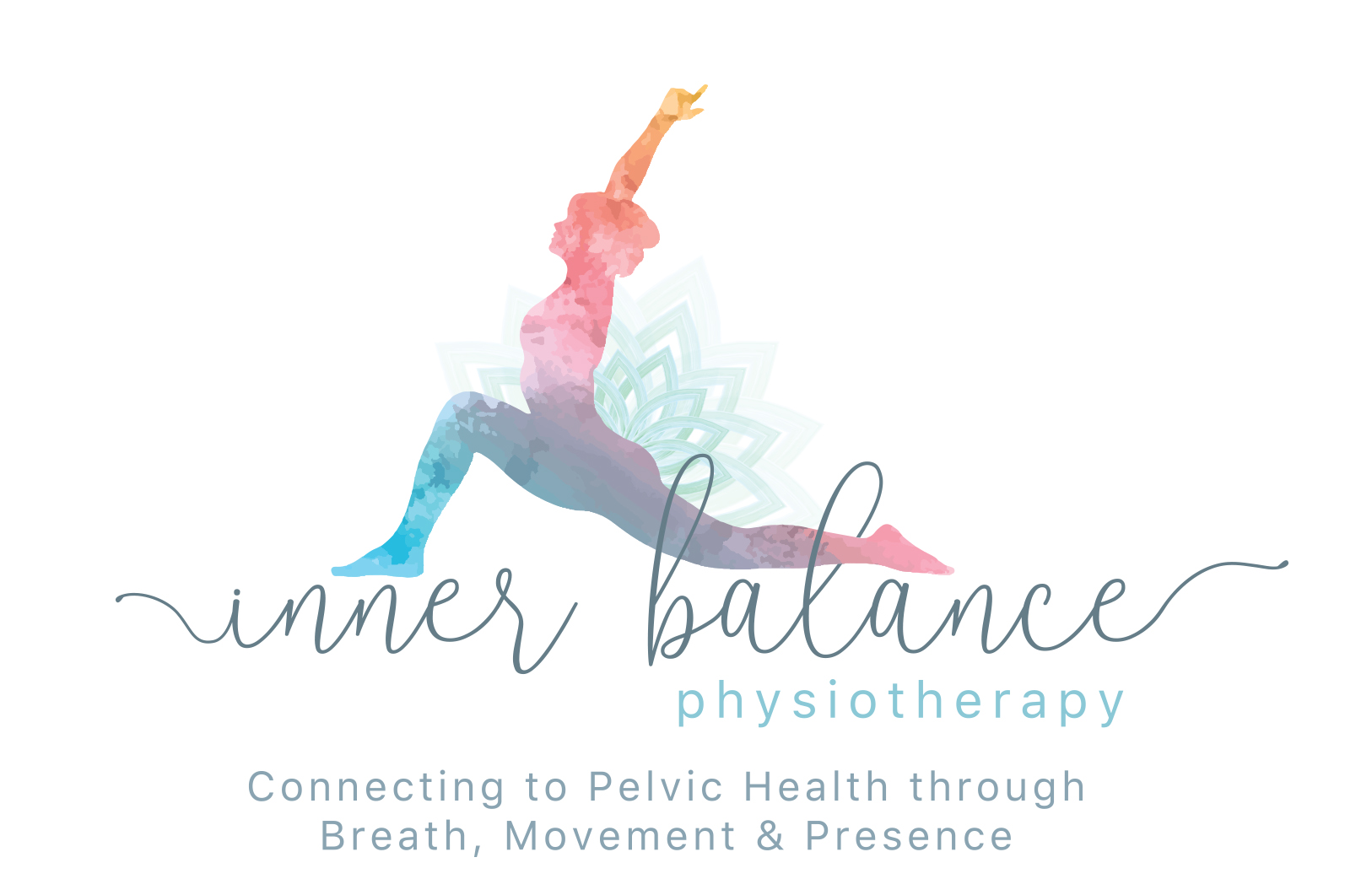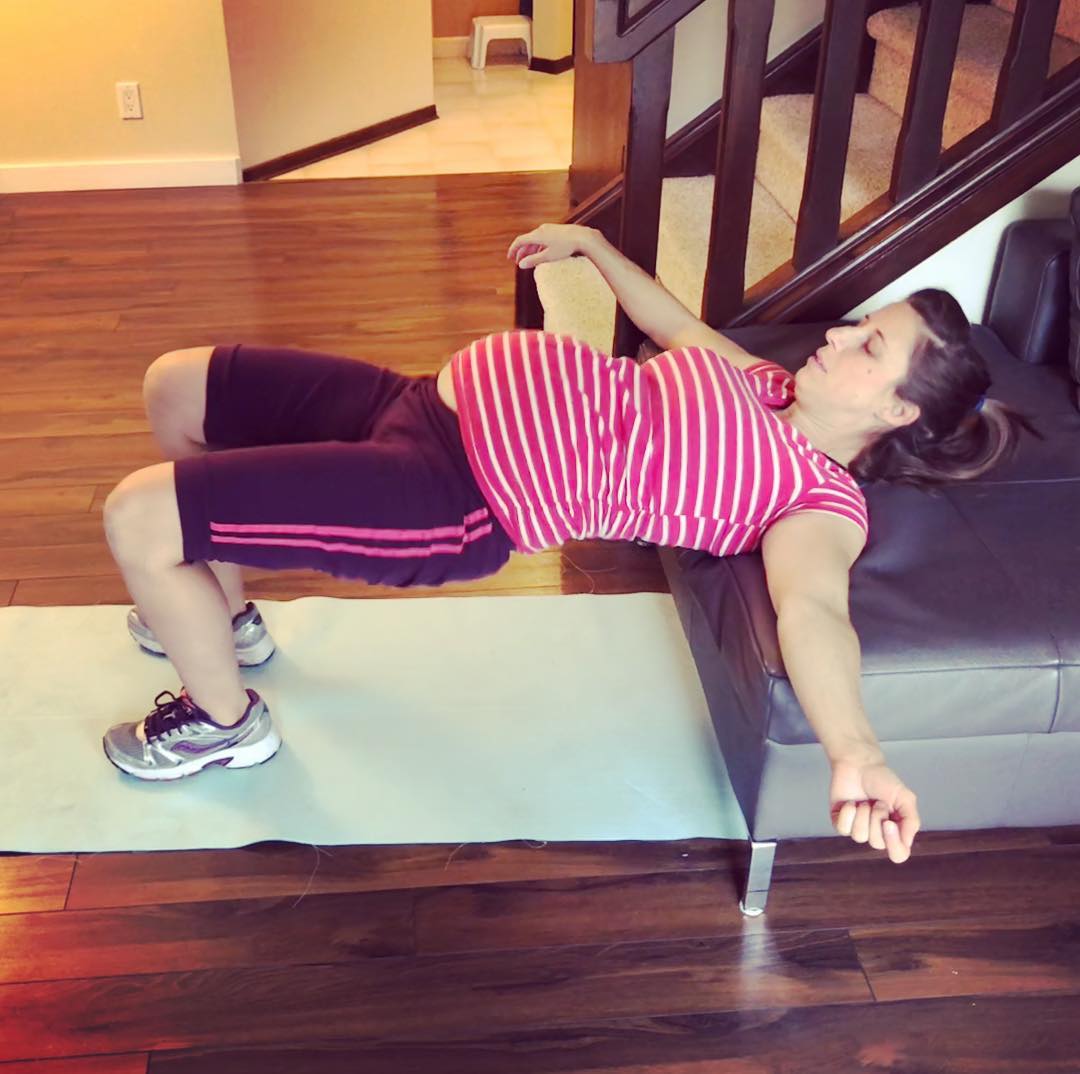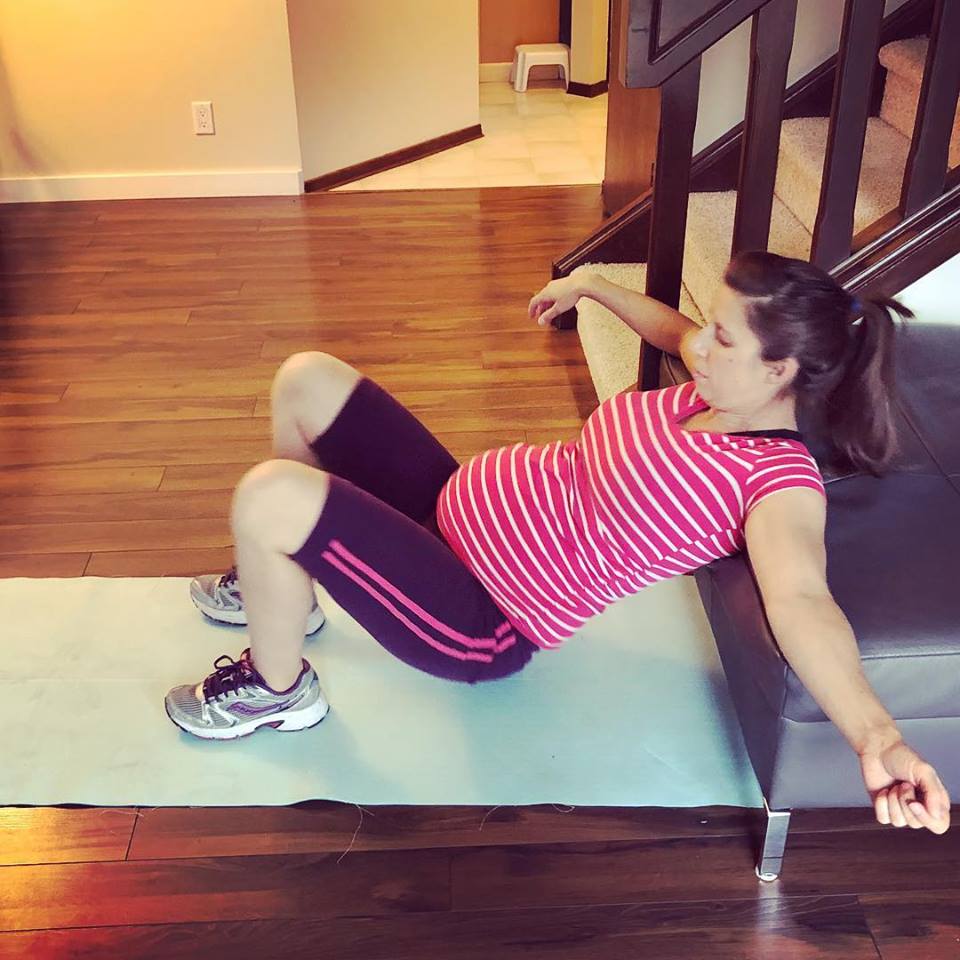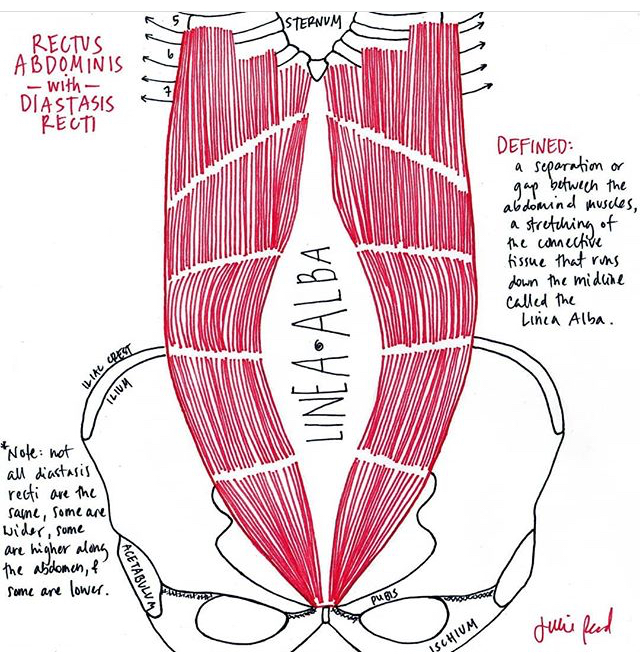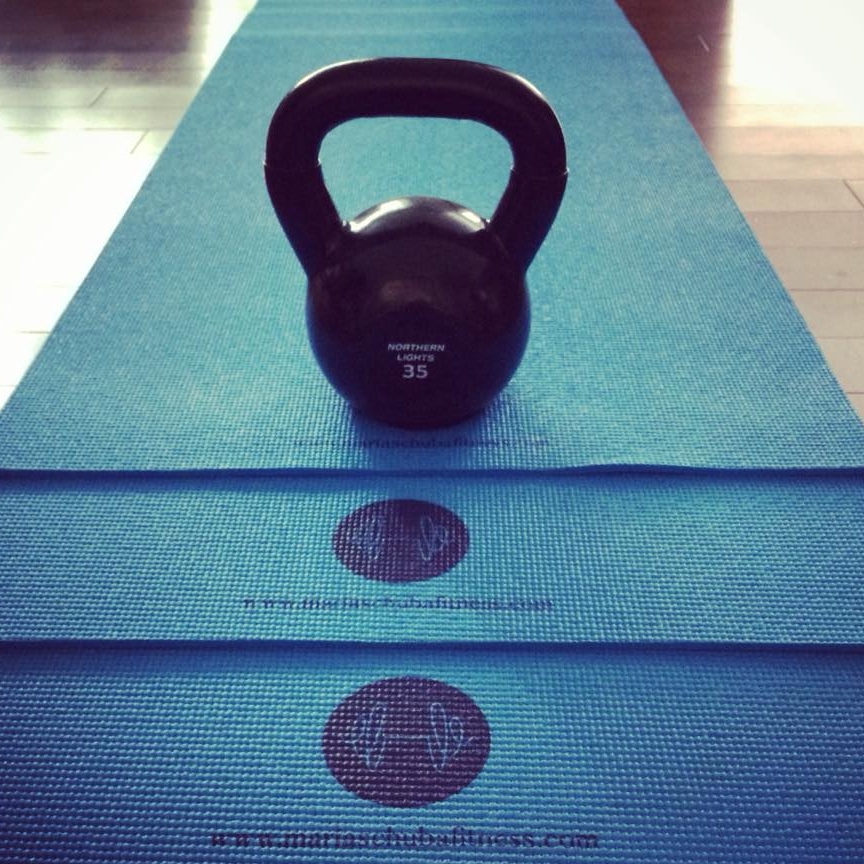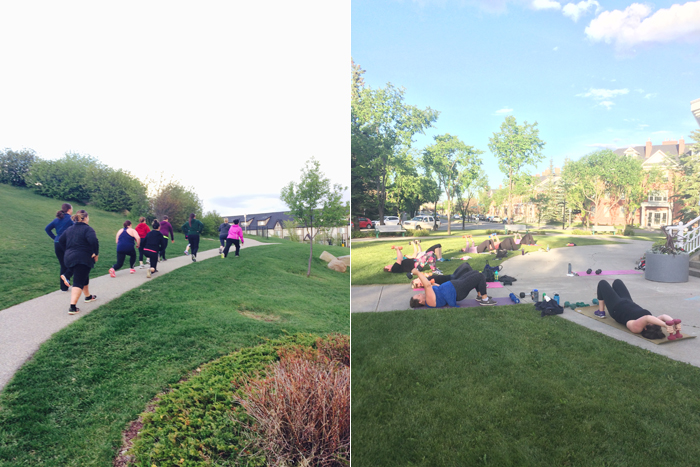
THE BARBELL BLOG
A solid resource squeezing out the facts
Be your own advocate!
When I was 20 weeks pregnant, I had intense pain in my leg. I knew something was very wrong, but my doctor dismissed me.
TBT to 11 years ago standing with my Sister in law. I had 2 weeks to go. She had 2 1/2 months.
When I was 20 weeks pregnant with my son I had a DVT, a Deep Vein Thrombosis. A blood clot in my leg. A very large blood clot.
I was walking between meetings with some colleagues and I told them I had to take a taxi because my leg hurt too much. They thought I was nuts.
I went to my doc that afternoon and she told me it was probably "just pregnancy pain". That night I couldn't sleep because of the pain. So I asked Dr. Google, and I self diagnosed a DVT.
I went back the next day and she still didn't think it was anything serious. I told her there was no way it was just "pregnancy pain" and that I was sure it was a blood clot. Because I was so adamant, she told me she would send me for an ultrasound "just to put my mind at ease."
I remember sitting in that ultrasound room and the technician came back and said "Do you have anyone here with you?" I told her I didn't. And she said "Well you need to get to the hospital now." I was admitted immediately.
My doctor made a mistake. My blood clot was extremely large and if not treated it could have been deadly. I was admitted to the hospital and my 20 week affair with needles began. (My husband had to give me daily blood thinner medication by a needle.... and I HATE needles. 🙈)
I trusted my intuition and I wouldn't leave the office until she sent me for an ultrasound. I was not one to question what a doctor has to say, but I did that day.
DVT's are not common, but they are 10 times more likely to happen during pregnancy. I knew nothing about them. We had recently been on a long car trip to visit family and a few days later I knew something wasn't right. I had intense pain and some swelling in my left leg.
If you think that something's not right... if your intuition is telling you something.... go with your gut.
Fight for what you believe. Don't let someone - even if it is a doctor - tell you it's nothing.
Ask the questions. Demand answers. If you don't think you are being treated fairly, find another medical professional.
Be your own advocate.
.
Because if you won't, who will?
What to Expect at your appointment with a Pelvic Floor Physiotherapist
Corinne Langford, Pelvic Floor Physiotherapist and owner of Inner Balance Physiotherapy explains what happens at your Pelvic Floor Physio appointment.
Corinne Langford is a mom of two, a Calgary pelvic floor physiotherapist since 2004, and is currently studying yoga therapy. Thank you for writing this guest blog post for us!
Ok, you’re thinking about it. You’ve heard about pelvic floor physiotherapy, either from a friend, your mom, another health practitioner, or through a google search. It’s not uncommon for it to take a moment to sink in as you think “they do what?”.
It’s true. Pelvic floor physiotherapy is successful because there is no guess work, we assess and treat the pelvic floor directly. It’s really all just anatomy, albeit a very personal area of anatomy.
But we should be caring for our pelvic floor the same as we care for our shoulder, knee or foot. It’s an important area of our body that is often under treated, which is a sin because our pelvic region goes through A LOT over our lifetime.
So what exactly does an assessment look like? First of all, pelvic floor physios tend to have a looong intake and history form. It’s a very big umbrella for such a little area, so we will talk about your general health history, childbirth experiences, concerns with intercourse, and ask all about your bladder and bowel habits and symptoms. We will ask about your job, daily activities and your exercise regime. Honestly, my favourite tidbits of information often start with “this might not be related, but....”. Sometimes it’s not related, but I have found more jewels of insight from these statements then I can remember. Generally, its ALL related.
After we chat, I explain what the actual assessment will entail (keep reading for this insider knowledge). Then comes the most important thing for my client to understand: the consent form. The most important piece of information on this sheet is that the client can withdraw consent, at any time, on any appointment. Honestly, it’s ok. I always say “we don’t have to do this all at one time, if you feel overwhelmed, or uncomfortable at any point, let me know and we can do the rest next time. And this goes for any treatment session”. We have SO much education and externally based topics to go through (posture, toilet education, positioning), we can always concentrate on these things. But truly, the sentiment expressed after assessments is “ok, that wasn’t as bad as I thought”.
I want this to be a very gentle, respectful, educational, and empowering experience for each client, every time.
Sometimes the assessment will start with some screening tests looking at pelvic joint symmetry/pain with movement. In fact, if a client comes in with predominant concerns of symphysis pubis or sacroiliac joint pain, our initial assessment/treatment may be entirely external.
Our “pelvic floor assessment” starts off with assessing diaphragmatic function, which is so very closely linked with pelvic floor function. In fact, regardless of whether we will be working on strengthening the pelvic floor, or relaxing the pelvic floor, we will use the diaphragm. I then look at the abdominal musculature. I am primarily looking for muscle tension, muscle activation, scar tissue, and I will assess for a diastasis recti.
The assessment itself starts off with visualization of the external genitalia. I am looking for skin changes or discolouration, descent of the tissue, scarring, and the general health of the labia. I will complete a couple of other external tests, and then I gently palpate along the vaginal walls, feeling for increased or decreased muscle tone. Sometimes the muscles are so tight that I am not able to comfortably access the deeper pelvic floor muscles.
I always assure clients that I will NEVER push past tight and sore muscles.
If the superficial pelvic floor muscle are extremely tight, assessment turns into treatment and I start teaching my client how to connect with and relax the pelvic floor muscles. If there is not too much tension, I will assess for muscle activation/strength, balance, and endurance. I use this information to choose the type of “kegel” I would like my client to start with. Believe it or not, I have 9 types of kegels to choose from to recommend, including some that actually teach how to relax the pelvic floor.
The assessment may also include a rectal assessment, which will assess the integrity of the anal sphincters, as well as the rectal walls. I will ask the client to contract/relax these muscles, as I assess tone/tension. This is an excellent way to directly assess the position and mobility of the tailbone. Like the vaginal exam, this is a very gentle assessment.
After the assessment I leave the room so the client can get dressed, and then we go through the results, as well as the home exercise program.
Although there are some guidelines regarding reps and sets for kegels, it is ALWAYS quality over quantity.
So if the muscles are fatiguing after 5 repetitions during the assessment, then that is approximately how many will be in a set. Of course, this is if you even receive “strengthening” exercises, many people have come in for strengthening and left with a program that focuses on relaxing tight pelvic floor muscles (remember that tension and weakness often go hand in hand).
One of the most common mistakes made with kegels is trying too hard, you can’t bulldoze through these exercises. Initially, these exercises usually feel more like a “brain” exercise than a “muscle strengthening” exercise.
Eventually, within the program, clients can expect to have breathing exercises, postural exercises, and exercises that coordinate the pelvic floor with the transverse abdominus, and other muscle groups (ie. glutes).
One of the things that surprises many people, is how many topics we will address. For example did you know that constipation is a very common cause of pelvic organ prolapse, and urinary incontinence? Or that calf tension can contribute to pelvic floor tension? Honestly, the interconnection between different areas of our body is fascinating.
Other Tidbits:
Assessments and treatments are all for 1 hour, although there are shorter appointment slots if we are near the end of a treatment program and doing more of a “check in”. But you’d be surprised at quickly an hour goes by.
Initially, appointments are every 2 weeks, and then we start to stretch it out. The average number of visits is between 4-6. But to be honest this depends on how many things we have to treat, the severity of symptoms and of course how often you do your exercises.
Clients are always welcome to bring their baby and kids. It is absolutely easier for the client if they are on their own, because then they can just focus on themselves. But sometimes this just isn’t feasible. Sometimes babies sleep, and sometimes they cry. It’s all good, we just work around their needs.
The overwhelming sentiment expressed after a couple of visits is one of empowerment.
People are often surprised at how much they learn about themselves and pelvic health. And many comment on how really, in an ideal world, every woman would have at least an initial assessment. Our bodies go through so much, and pelvic concerns are often under treated because many don’t realize that there are treatment options available for most conditions.
Remember, pelvic symptoms are common but NEVER normal.
.Corinne Langford BScPT Corinne is a pelvic floor physiotherapist with Inner Balance Physiotherapy, and the Lifemark Health Centre - Sundance. A pelvic floor physiotherapist since 2004, Corinne treats men and women with all pelvic concerns ranging from pelvic floor weakness, incontinence, pelvic pain, prolapse. Inner Balance Physio offers one on one sessions of pelvic floor physiotherapy in Calgary, one on one in home sessions, pelvic health workshops, and classes. Corinne is dedicated to helping her clients discover and develop their own inner source of healing and strength.
Can I lie on my back during pregnancy?
Eleven years ago when I was pregnant, I was told not to lie on my back.
“Don’t sleep on your back!”
“Don’t exercise on your back!”
“Don’t lie on your back!”
Well times they are a changing’.
Eleven years ago when I was pregnant, I was told not to lie on my back.
“Don’t sleep on your back!”
“Don’t exercise on your back!”
“Don’t lie on your back!”
Well times they are a changin’.
In the past it was thought the baby could press on and block the moms vena cava (vein that carries blood from lower body to the heart). So lying on your back for long periods of time was not recommended.
However more recent research suggests that as long as you feel ok, you and the baby are probably ok. That is, if there is no nausea, light-headedness, discomfort, tingling in legs, or breathlessness, you can continue in that position.
But if you start to feel those symptoms (which may be more common in the third trimester) then it’s time to probably use an incline or just avoid the supine position when you can.
If you're not feeling great lying on your back for a bridge. Lift it up a level to a hip thrust.
This exercise is great for the gluts, but also activates the core. Tie in your core-connection breath and you've got a fantastic prenatal exercise. Inhale as you lower and exhale as you lift.
Hook your shoulder blades on to the edge of a bench (or couch!). You can have your arms straight out or put your hands behind your head.
Keep a straight line with your back. Try not to overextend or arch your back.
Strengthening your gluts during pregnancy is a great way to support your pelvic floor. It can also help with those aches and pains through the hips and lower back.
Feeling good? Try a hip thrust hold.
While your hips are raised and your back is flat, hold the position. Be sure to breathe!!
Check into how you’re feeling and modify as needed!
How Prenatal Yoga Can Improve your Pregnancy
Prenatal Yoga creates a sense of calm, relieves stress and provides an opportunity to connect to your body and your baby through movement and breath. Read more about why you should be adding yoga to your pregnancy routine here...
My friend Sinead, owner of Kula Mama Yoga writes about why prenatal yoga can improve your pregnancy. She is a mom of 3 boys, a yoga instructor and a pre and postnatal specialist.
Yoga; is it me or is it everywhere right now? Yoga Studios seem to be popping up all over the place, we are in the midst of an explosion in the Yoga industry and there seem to be classes for every walk of life; Yoga for Kids/Teens, Seniors, First Responders, Stroke Patients, Hot Yoga, Warm Yoga, Cold Yoga (well maybe not yet but soon, I’m sure!), Yoga Therapy for Healing…and most importantly (to myself at least!) Prenatal Yoga, Fertility Yoga and Postnatal Yoga. So why all the fuss? What makes Yoga so universally accessible and a cure-all for everyone? Read on and I’ll try to enlighten you!
Yoga is adaptable to all body types, abilities and energy levels and has numerous medical benefits which are increasingly being proven in clinical trials. One of the key components in Yoga is the ability to control your breath and turn your sight inwards as you move through your poses, which has a calming and restorative impact on the mind and body. Reducing stress levels is often a key factor in tackling health issues and so Yoga can tie into that. By gently and mindfully moving into postures and focusing on correct alignment, we can improve posture, flexibility and strength and the additional release of endorphins, our ‘feel good’ hormones, means we can leave class feeling awesome. Add in a lovely relaxation at the end of class and what's not to love?!
Why Prenatal Yoga?
Prenatal Yoga creates a sense of calm, relieves stress and provides an opportunity to connect to your body and your baby through movement and breath. Studies have proven that an integrated approach to Yoga - postures, breathing and meditation combined - can improve birth outcomes such as higher birth weight, lower risk of pre-eclampsia and reduced blood pressure. Midwives can usually tell if a Mom has taken Yoga classes due to her breath work and labour postures. Prenatal Yoga reduces stress levels, provides an environment of safety for Moms to talk and connect about their concerns, experiences and joys of pregnancy and most importantly it forms those early motherhood friendships which become vital further down the line in creating support networks and alleviating isolation in new Moms.
Prenatal Yoga instructors work within a body of knowledge around pregnancy-related ailments so that the poses are safe, mindful and will strengthen Mom without creating any additional stress in the body, whilst relieving some of the more common aches and pains of pregnancy. You will also learn breathing techniques for labour and for safe movement of the pelvic floor, which will also aid in your postnatal recovery. And some of the poses can help during labour and can even help to reposition a breech baby!
Trimester by Trimester guide to Prenatal Yoga:
During the first trimester, prenatal yoga can help to energize the body with a gentle workout that can relieve lethargy and help reduce feelings of nausea through breathing exercises.
In the second trimester, energy typically increases and we use prenatal yoga help to safely work into the areas of stiffness in the body, as your body grows and changes and natural movement patterns become restricted. We work on opening the hips, stretching the side body, improving core strength safely without using the intra-abdominals, strengthening the thighs and legs to improve balance, relieving tension on the pelvic floor and focusing on the breath to encourage healthy movement of the pelvic floor.
In the third trimester, we continue to stretch any areas of stiffness in the body; we work on squatting postures and we learn some tools for labour - using poses such as toe stretches to demonstrate how the breath can help us work through moments of intensity. We will work in poses that can help to relieve pain in labour, and some that Mom can come back to post labour to relieve aching shoulders, to open the chest, and to gently stretch the legs. In the third trimester we also focus on meditation to overcome physical intensity, and to find inner calm and peace as well as connecting to baby and the breath.
Not Just a Great Stretch
Prenatal Yoga can help with edema, low back pain, gestational hypertension, improved birth weight, carpal tunnel syndrome, pelvic discomfort, rib discomfort, pressure on pelvic floor, muscular stiffness, heartburn, constipation, sciatica and morning sickness. It can improve balance as body weight distribution shifts, teach methods of breathing that enable correct movement of the pelvic floor muscle in preparation for birth and post-birth repair, decrease stress, improve sleep, and give an essential time out from the stresses and strains of daily life in pregnancy - a session just for mom and baby, of calmness, peace and tranquility through flowing movement.
Prenatal Yoga 101
Choosing the right class - any qualified Yoga instructor can teach a Prenatal Yoga class, but only those with an 85-hour Pre and Post-natal qualification can teach a class with all the correct knowledge of risks and alignment in pregnancy, so seek an instructor with the RPYT 85-Hour Certification.
Online classes - exercise caution if you’re trying online free classes online and seek out a Pre or Post natal fitness specialist. If a yoga instructor is a very practised Yogi then the poses might be too strenuous and it can become risky. Listen to your body and obey it’s limitations, and if you are in any doubt then perhaps try an in-person class where your instructor can modify poses for you and keep an eye on any risk factors.
What time of day is best? - choose a class that works for your time of day - if you are exhausted after work, try and find a weekend session that works for your schedule so you can get the most our of the class. As much as the class should be restful, you don’t want to fall sleep after a long day at work!
What to expect - most instructors will include a number of different props - blocks, bolsters or pillows, straps, and blankets are common props to ensure Mom reaches her ultimate comfort level!
Can beginners do Prenatal Yoga? Absolutely - most ladies coming to Prenatal Yoga are Yoga beginners so this is never an issue. this is where many ladies find their first connection to Yoga, as Prenatal is such an addictive session.
Will I have to work hard and get sweaty? No, Prenatal classes should not be strenuous - the poses are modified and gentle; while you might feel some post-class stretching in your legs or or hips you should not be exerting yourself or moving too quickly.
Sinead O’Connor is a Yoga Instructor RYT-200, RPYT-85 Hour working and living in SE Calgary, and the owner of Kula Mama Yoga.
Diastasis Recti. The Good, the Bad and the Not So Ugly.
Read more about Diastasis Recti. What is it? How to check for it? What to do about it?
Diastasis Rectus Abdominus
What is it?
We have muscles down the middle of our abdomen, called the Rectus Abdominus Muscles. (or sometimes referred to as the 6 pack muscles). In between those muscles, we have connective tissue called Linea Alba. This tissue runs down the middle from your sternum to your pelvis. It stretches when we are pregnant and allows our abdominal wall to grow with our baby. The gap in between the muscles is referred to as Diastasis Rectus Abdominus.
THIS. IS. AMAZING.
Our bodies change and MAKE ROOM for the tiny human we are growing inside of us.
INCREDIBLE.
No need to fear it because during pregnancy it is TOTALLY NORMAL.
NORMAL.
You didn't do anything wrong.
Your body is adapting to fit your baby.
EXTRAORDINARY.
MOST pregnant women will have Diastasis Recti in the last month of pregnancy (and most likely before that)
Julie Read shows us Rectus Abdominus (above) and Rectus Abdominus with Diastasis Recti (below). You can see more of Julie Read's work here.
The majority of bodies will heal on their own postpartum, but some may need some extra help. A Diastasis Recti is when you have a gap of 2 fingers or more in between the rectus abdominus muscles. However, the distance of the gap is not necessarily the issue. What you need to be more concerned with is the tension of the linea alba - the connective tissue. It's important to have strong tension in this tissue. This will give you better core function.
Sometimes the gap may never close, but if the tension is strong, that's OK.
How can you check?
There are 3 places to check. Above the belly button, at the belly button and below the belly button.
Lie on your back with your knees bent and your feet flat on the floor. Relax your head and shoulders and place your fingers, with your palm facing towards you, at the belly button.
Lift your head and neck just off the floor (not a crunch), exhale, and press with your fingertips. You may feel the two sides of the rectus abdomens come together to hug your fingertips. The gap that you may feel is the Diastasis Recti.
Now check above the belly button and then below the belly button. (approximately 3 fingers above and below.)
Now feel the tension. You shouldn't be able to sink your hand deep into the abdomen. The goal is to have strong tension in the linea-alba, similar to what a stiff trampoline feels like.
What can you do about it?
- First of all, sleep and rest! If you are a new mom, you NEED sleep and rest. Your body needs time to heal. And sleep and rest are a big part of that healing process.
- See a Pelvic Floor Physio therapist. She can check to see if there is Diastasis Recti and also check you for other pelvic floor dysfunctions.
- Check your alignment. Get your ribs over your hips. You don't have to be in perfect alignment all the time. But it's something to keep in check because when you're not in correct alignment the intra abdominal pressure will affect the Diastasis Recti.
- Breathe. If you find yourself holding your breath when you are exercising or lifting your baby, or when you are doing any activity... BREATHE! Learn more about the core-connection breath here. And stop holding your breath!
Good alignment and breathing will help you control the intra abdominal pressure. Now, if you get all of these in line, and you can perform some simple base exercises with correct strategy, then it's time for a challenge.
If you can't breathe properly, or if you have doming or bulging you need to change it up. But if you can manage the tension and the intra-abdominal pressure with the breathing, then you can add resistance and change things up.
Until then, you may need to stay away from crunches, planks, situps and the 'traditional' core exercises.
And if you see an advertisement saying DO THIS ONE EXERCISE TO HEAL YOUR DIASTASIS AND GET RID OF YOUR MUMMY TUMMY, please ignore it, delete it (hell, even report it!) and move along.
There is no such thing as ONE EXERCISE that will heal EVERYONE'S Diastasis.
Nope.
Not possible.
Cause every body is a different body.
Quick Kettlebell workout!
Got 15 minutes?!
Try this quick at-home workout!
Got 15 minutes?
Try this workout!
(Modifications down below for postpartum)
20 KB swings (if you don’t have a KB, use a dumbbell)
10 one arm bent over rows (each side)
10 push-ups
20 jump lunges (10 each side)
Farmer carry 30 strides each side
Repeat 2-3 Times
Modifications if you are a new mama, have diastasis recti or any other pelvic floor dysfunctions:
20 body weight squats
10 one arm bent over rows (each side)
10 one arm chest press (each side)
20 reverse lunges (10 each side)
Farmers carry 30 strides each side
Remember to exhale on exertion and have fun!
(for more detail on this breathing strategy, click here. )
Prenatal Fitness - What should you do?
Safe, suitable and regular physical activity throughout your pregnancy helps keep you and your baby healthy.
But it's so confusing. What can I do? Should I continue with this activity? Will this hurt the baby? Can I keep doing what I was doing? Will this exercise hurt my body?
So many questions! The answer? Read more.
Safe, suitable and regular physical activity throughout your pregnancy helps keep you and your baby healthy.
But it's so confusing. What can I do? Should I continue with this activity? Will this hurt the baby? Can I keep doing what I was doing? Will this exercise hurt my body?
So many questions!
And the answer?
Well, that depends.
I think you can count on the general rule that if you were exercising at a moderate to high intensity before pregnancy, you can continue (if there's no health concerns.)
If you were not exercising before pregnancy, this is not the time to rev things up. It's ok to exercise at a low to moderate intensity. And you CAN start exercising during pregnancy even if you weren’t very active before.
However, every body; every fitness level; every pregnancy makes it difficult to prescribe a one size fits all exercise plan.
There are so many benefits of exercising during pregnancy.
The Benefits of Prenatal Fitness
Boosts your energy
Helps you sleep better
Reduces pregnancy discomfort
Helps you prepare for childbirth
Reduces stress and lifts your spirits
Improves your self-image and confidence
Increases rate of postnatal recovery
Prevents excessive weight gain
Decreases risk of high blood pressure and gestational diabetes
Decreases severity of low back pain
With all these benefits, why wouldn't you exercise?
Well you have to ask yourself. How do you feel? Does the exercise make you feel good? Are you feeling any pain? If so, you need to stop and re-assess. Can you change the exercise? Can you lower the weight? Can you modify your position?
Does it make you want to stay in bed for 2 days afterwards being totally wiped out? Perhaps you need to lower the intensity. Rest is very important during pregnancy and you should honour that as well. You are building a human life and that takes its toll with nausea and exhaustion. Resting is important!
Should you continue to do all the things that you were doing before?
Well, that depends.
Are you doing activities that involve contact? (hockey, basketball, soccer)
Are you doing activities that could involve falling? (skiing, rock climbing, mountain biking)
Think about the risk vs the reward. What is the risk to you and your baby? What is the reward? Is the risk worth the reward?
When I was pregnant, I stopped skiing. Not because I thought it would hurt my body - I could ski runs confidently with no problem. I stopped because I was terrified of being hit by another person on the ski hill. That was my decision. Even though I love skiing, I determined the risk wasn't worth the reward.
Should you continue running? Think about the risk versus the reward.
What about running? The risk of contact or falling is pretty minimal. However, you need to consider the risk to YOUR body. Your pelvic floor is already supporting the weight of the baby and all the extra fluids. You need to think about the extra pressure that you're putting on it with the impact. It could affect your pelvic floor recovery.
There are some very safe and effective activities that will keep you and your baby safe. For example: walking, stationary cycling, swimming, prenatal yoga and strength training.
Strength training is amazing for your pregnant body as you train for life with your new baby.
Lifting your baby in and out of the crib. Moving the car seat to and from the car. Lifting the stroller in and out of the SUV. Carrying your screaming toddler out of the grocery store.
Strength training during pregnancy can help you with these activities postpartum and help train you for life as a mom.
If you start to feel extra pains with certain movements, it doesn't always mean you need to stop completely. It means that you need to reassess the movement and perhaps change the breathing strategy or your alignment with that movement. Try different positions. Try exhaling at different parts of the movement. Try different strategies.
Now is the time start thinking about the core and pelvic floor. Strengthening AND learning to relax the core and pelvic floor muscles will help you during labour and postpartum. Learning diaphragmatic breathing will also help you recover postpartum...read more about that here. And seeing a pelvic floor physiotherapist while pregnant will be a wonderful addition to your birth experience and a great start to your postpartum recovery.
Pregnancy might seem like the perfect time to sit back and relax. You likely feel more tired than usual, and you might feel some new aches and pains from the miracle that is growing inside of you. It's ok to take some time to rest.
Pregnancy is also a great time to be active. Just remember to cue into your body, be safe and have fun with it!
Welcome to my new website
Welcome to my new website! Learn about my WHY and the passion I hold for helping women in their prenatal and postnatal fitness journey.
I started my business when my kids were little and required a lot of my time during the day. It has been a wonderful opportunity for me as it has given me tons of flexibility. Evening classes and personal training fit into our family life. It started off as a part-time gig - something I've done on the side, when time allowed. Over the years, my business has grown, and so have my kids. Life - work balance has shifted as they need me less during the day but more at night with their various activities and my volunteer commitments.
But as my kids and my business grew, I knew it was time to invest and refocus. My first step was becoming a postnatal fitness specialist through the work of Jessie Mundell. Since then the learning has been endless. I have immersed myself in the world of pre and postnatal fitness and have completed Brianna Battles 'Pregnancy and Postpartum Athleticism Course.'
It shocks me that after a woman grows a human being that she is often sent on her way at her 6 week check up. There is very little discussion of pelvic floor dysfunctions. When you compare that to any other surgery - there is typically weeks, if not months of recovery and rehab. But when one has a baby, there is often nothing. And because there is no discussion after the baby is born, there is very little education available to the mother. European countries have had pelvic floor physiotherapy available after birth for years. But yet, in Canada, we are only just now learning about this option. And because the education is not there yet, these topics seem taboo. People are afraid to talk about their diastasis recti, their urinary incontinence or their heaviness or pressure in their pelvic region.
So let me say it here.
It is NOT NORMAL to pee when you sneeze, cough or run.
It is NOT NORMAL to have pain during intercourse.
And it is NOT NORMAL to feel pressure or pain in the pelvic region.
These are all COMMON, but they are not NORMAL.
Pelvic floor Physiotherapists can do an internal exam to determine what the issue is for you. Every woman who has had a baby should make an appointment with a Pelvic Floor Physiotherapist. (and if you need help finding one, let me know.)
I am passionate about this because the more I talk about it, the more I hear from women who are experiencing these things and have done nothing about it. Because they are embarrassed about it. OR they didn't know that there were options for them.
I am passionate about this because NINE years after the birth of my son, I took the time to see a pelvic floor physiotherapist and started the rehab process for my urinary incontinence. My dysfunction wasn't huge, but it was there when running. And I just thought it was normal. But its NOT and there are things you can do to fix it.
I am passionate about this because I started intense exercise WAY too soon after both of my children were born because I was in quest of my pre-baby body. I now know there is so much more to motherhood than losing the baby weight. So much more to life than focusing on the scale.
I can help with the healing of the postnatal body. I can help women get back to doing the activities that they love, pain free and symptom free. But it's SO important to rehab and recover the core and pelvic floor FIRST before moving on to more intense exercises. This could be the first couple weeks or months after the baby is born. OR it could be years. Because if the issue wasn't fixed previously, it's most likely still an issue. Postpartum is forever.
Welcome to my brand new website! Take a look around, register for a class or session, read testimonials collected from clients, or contact me with any questions!



